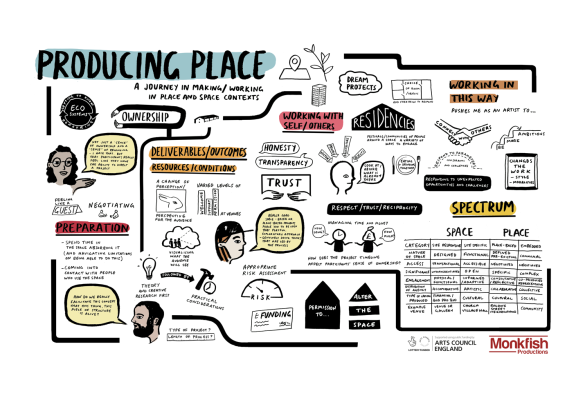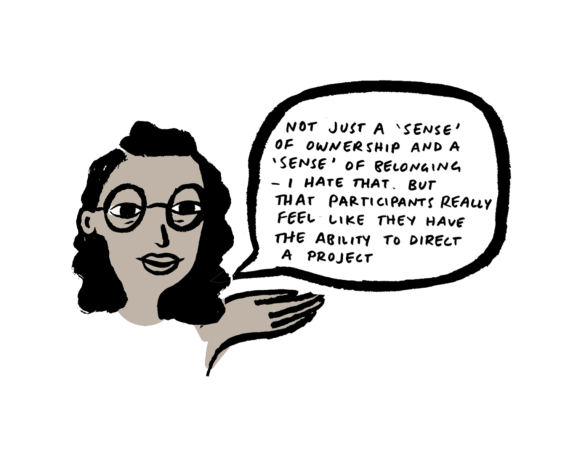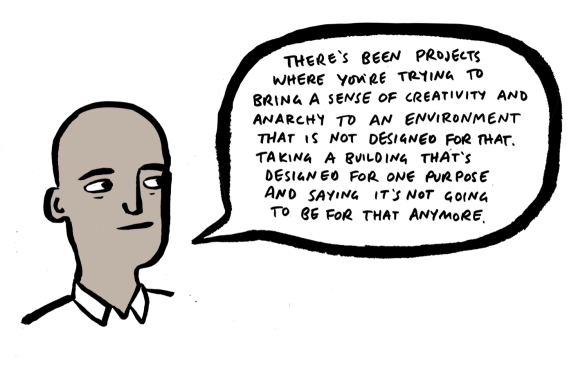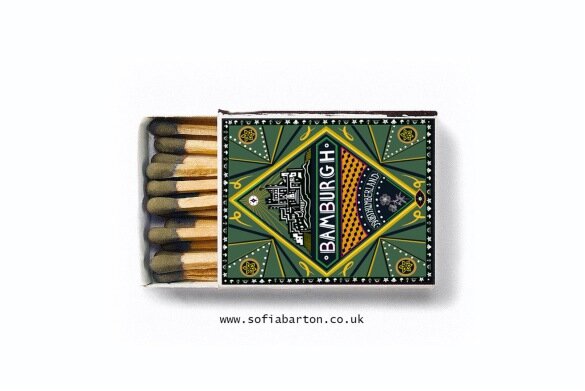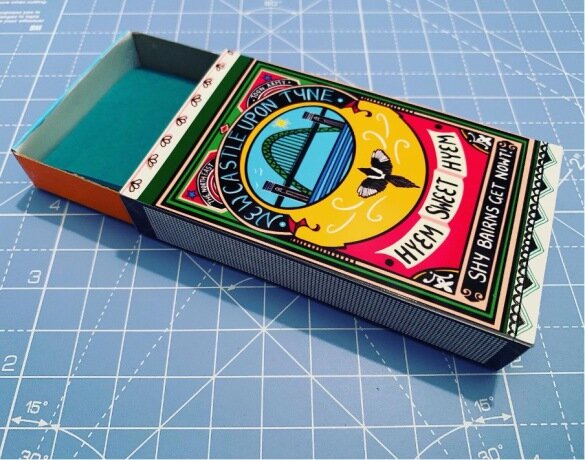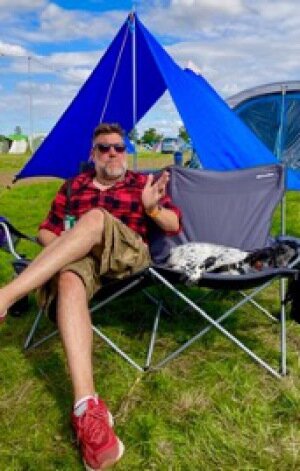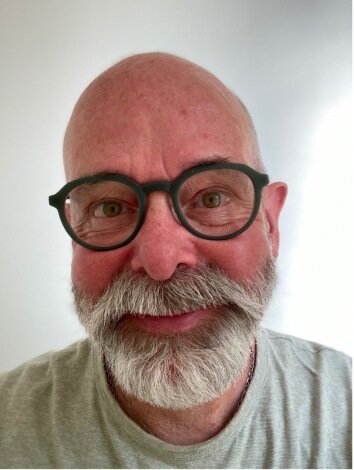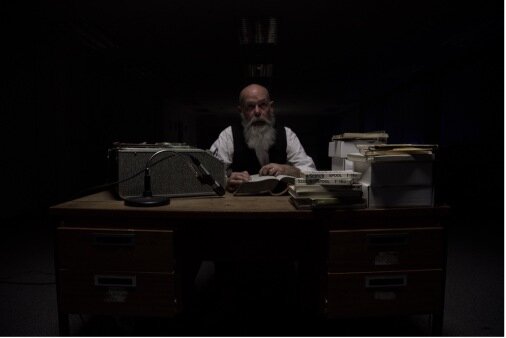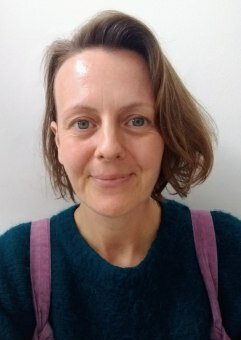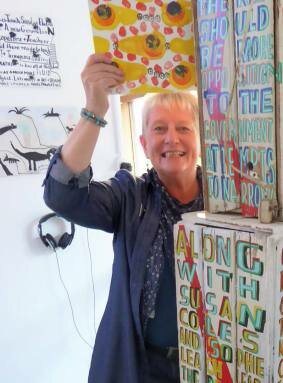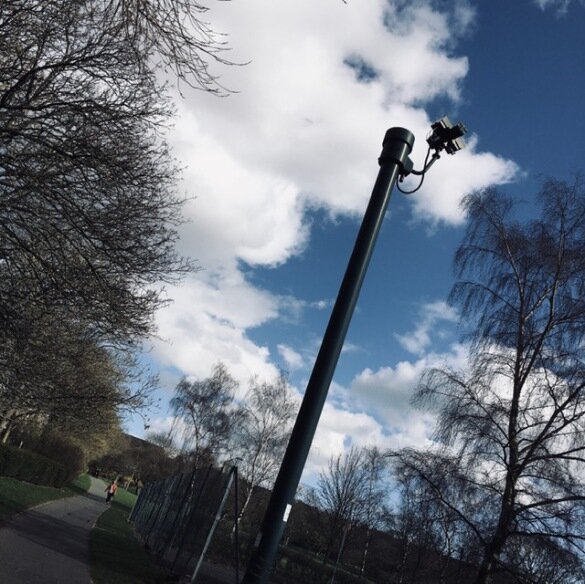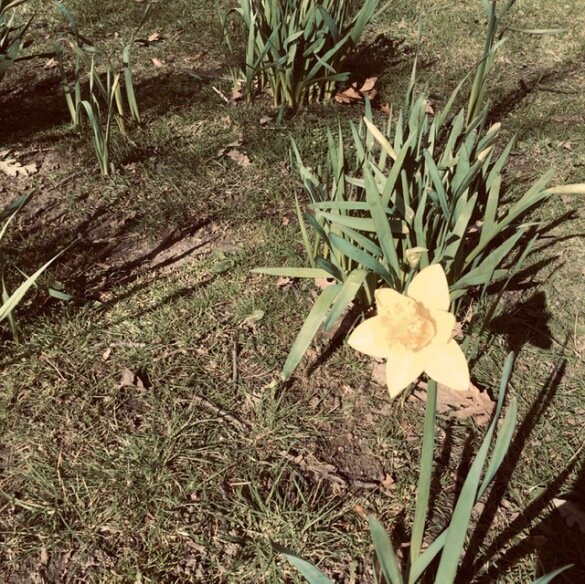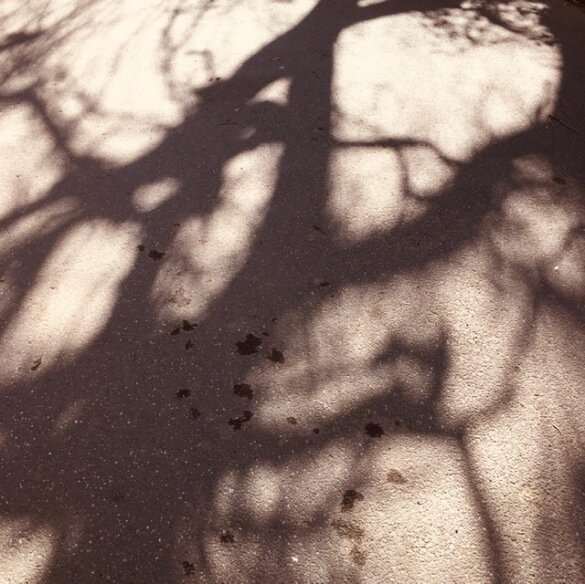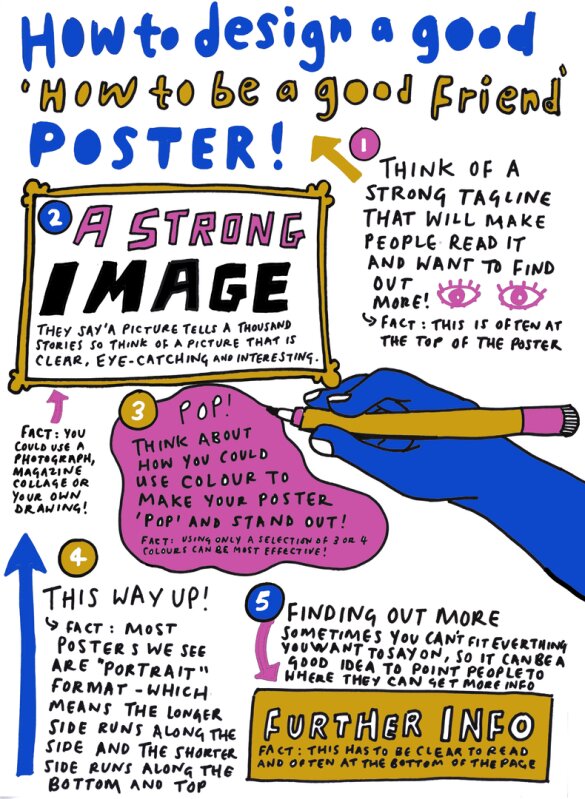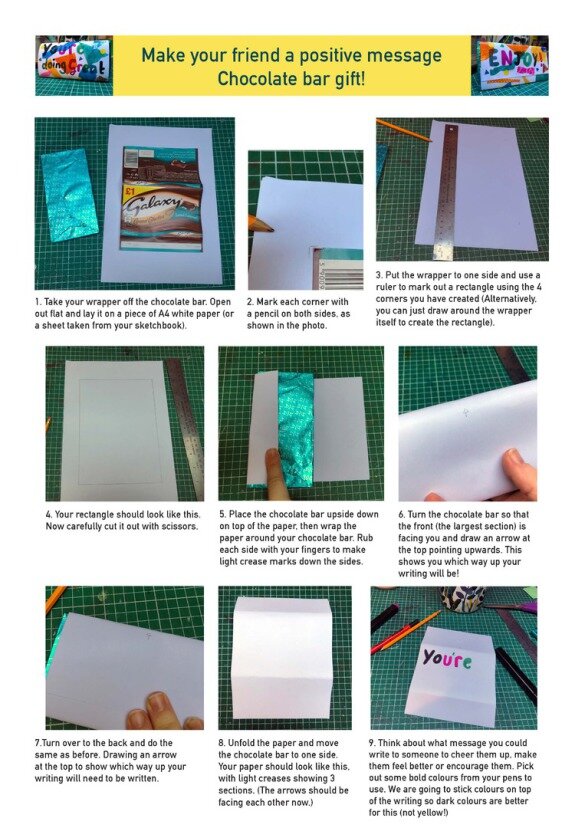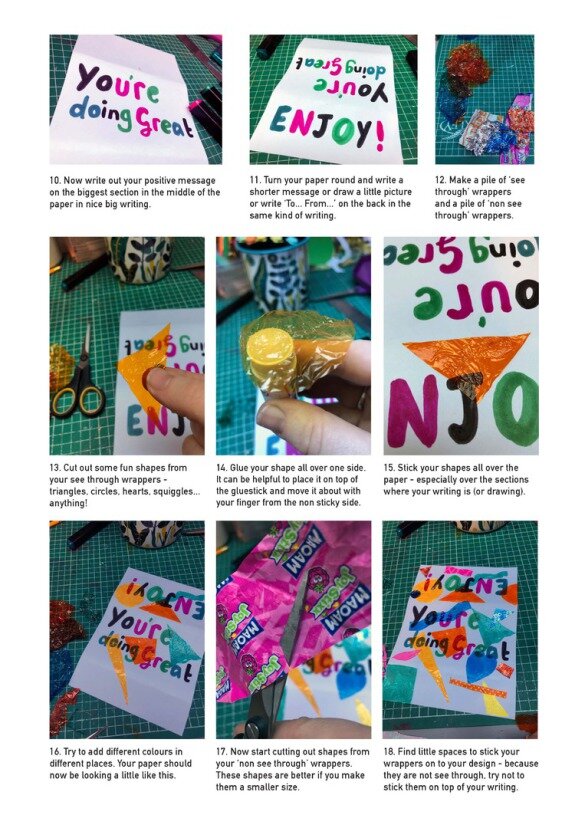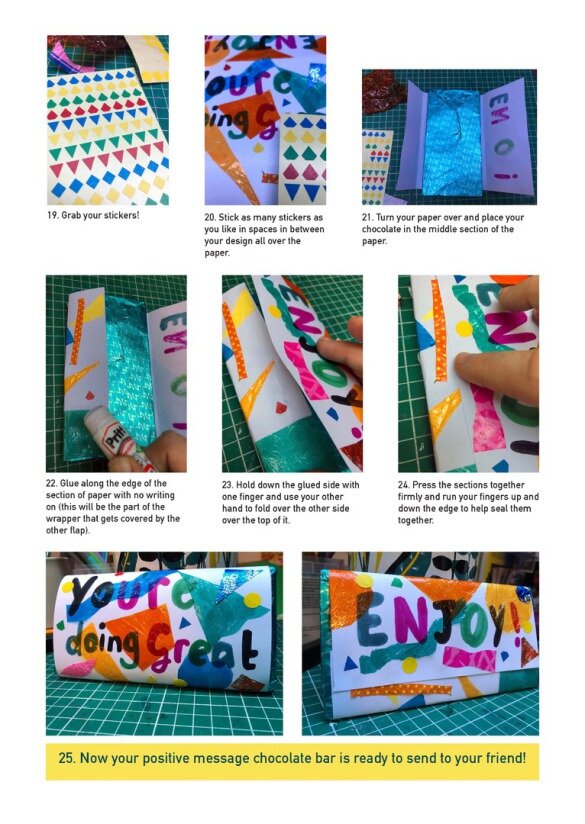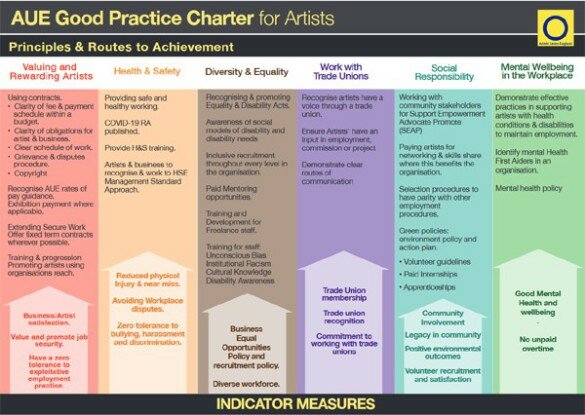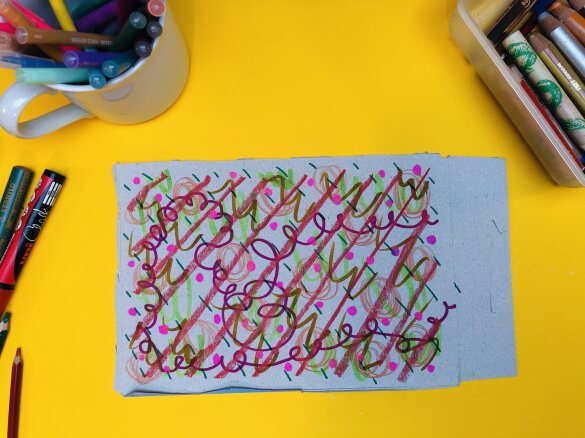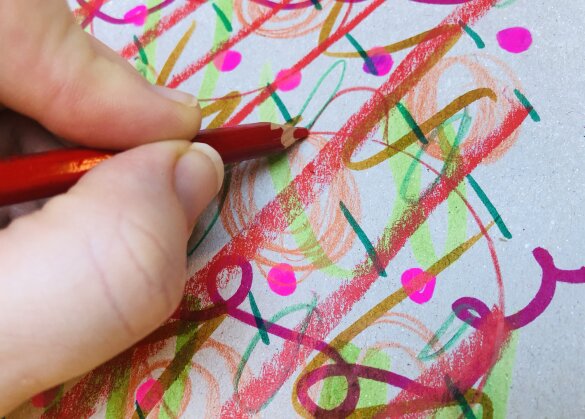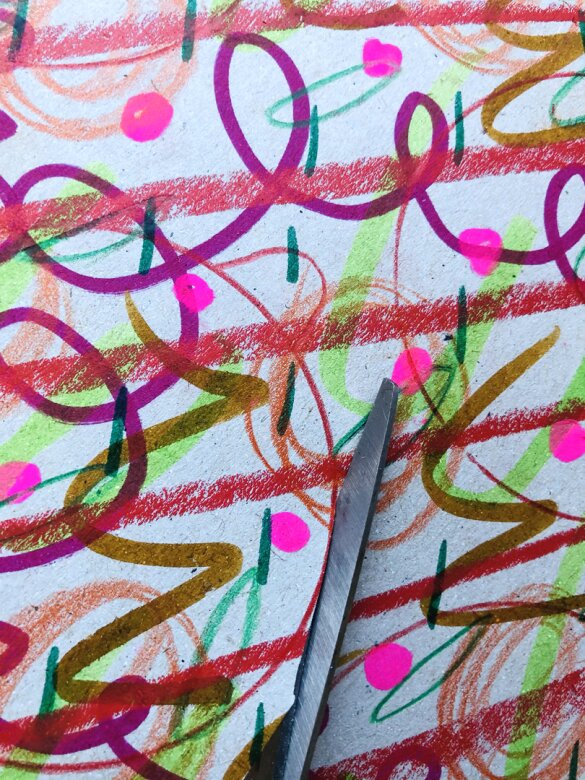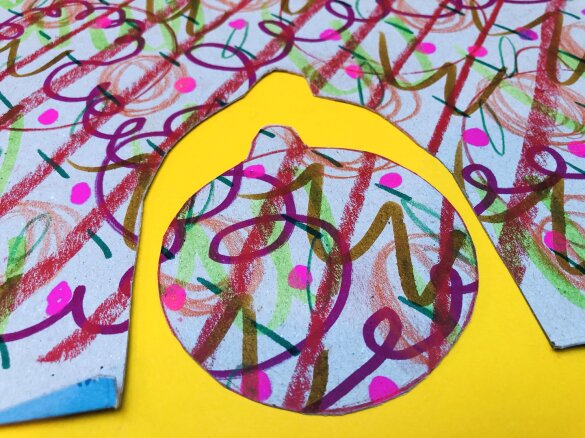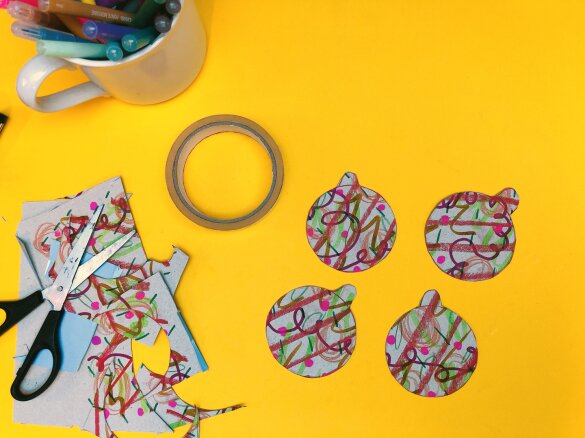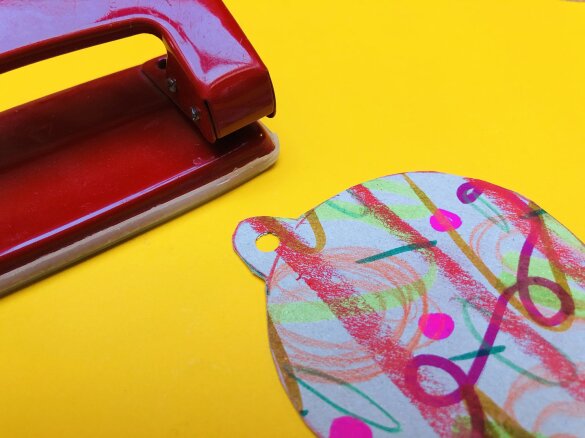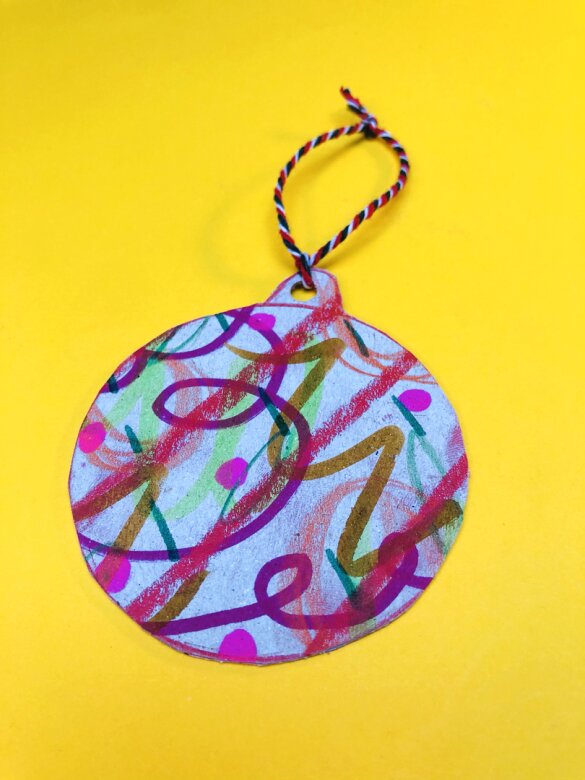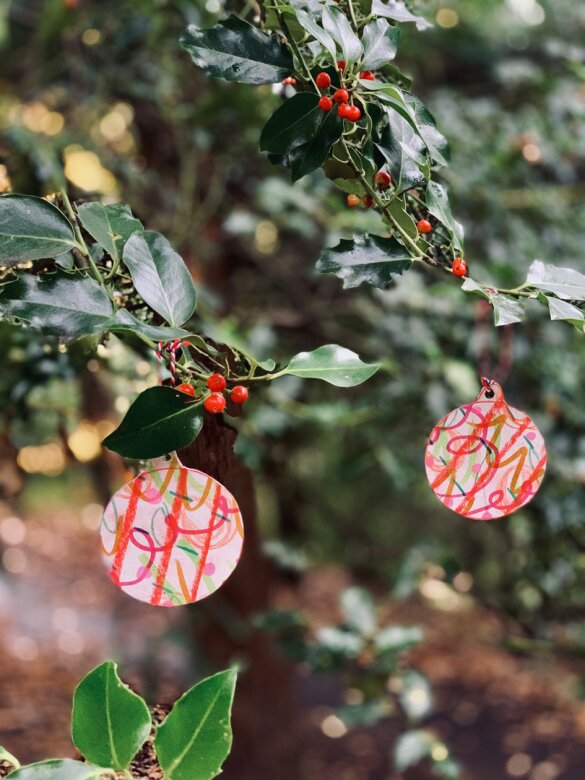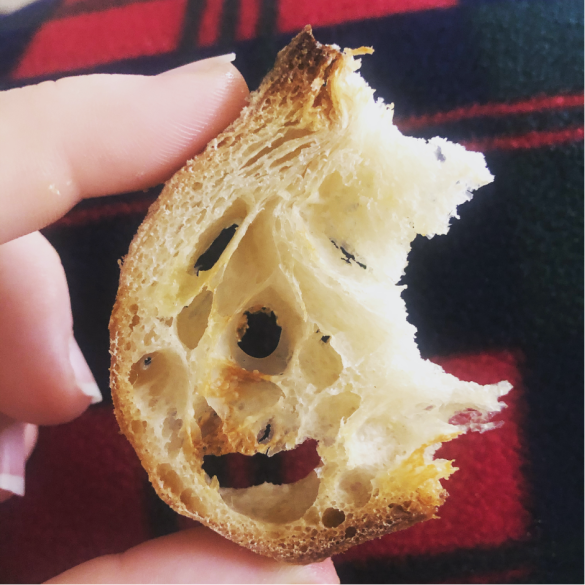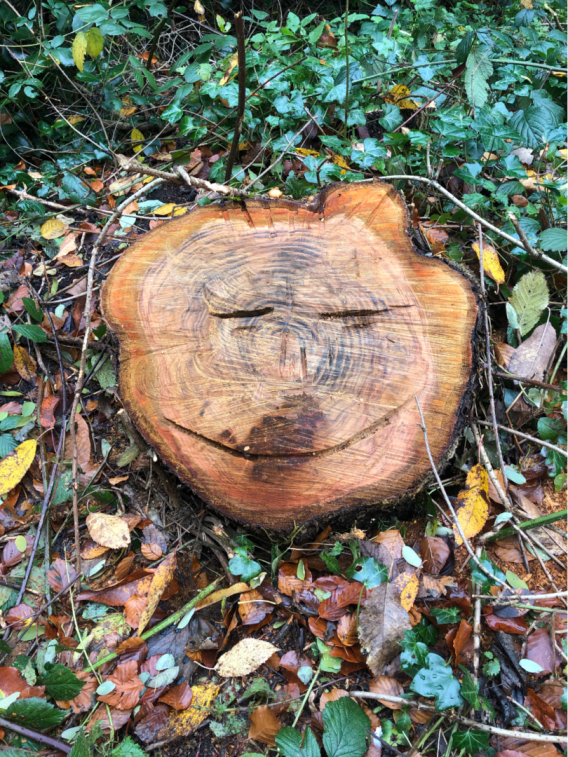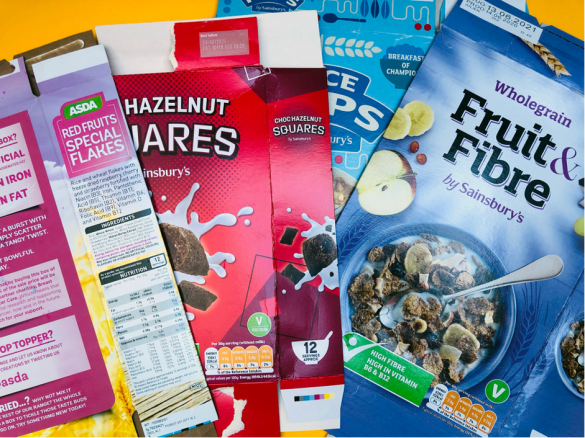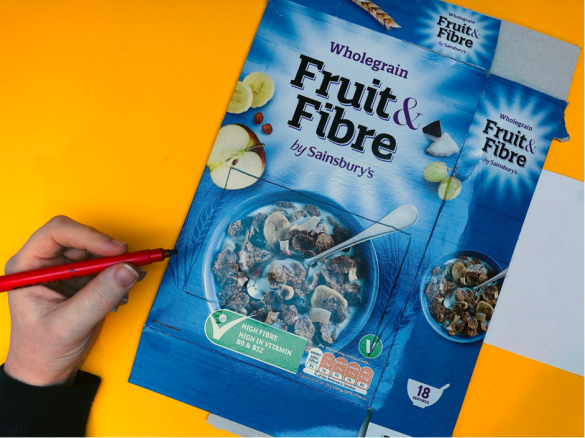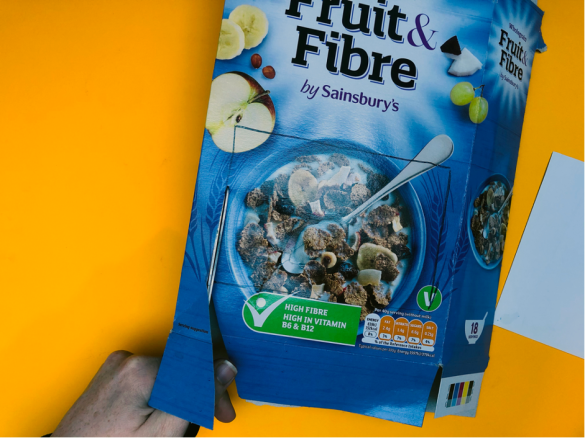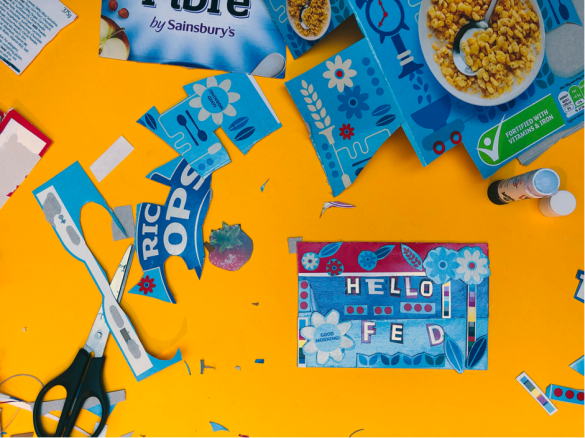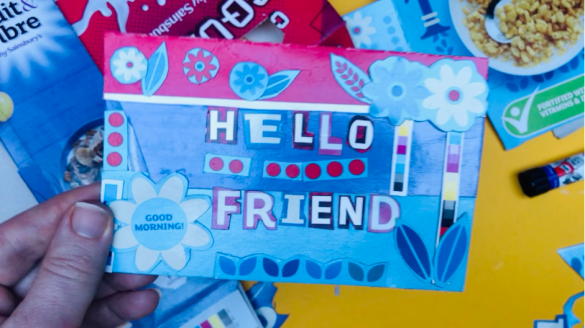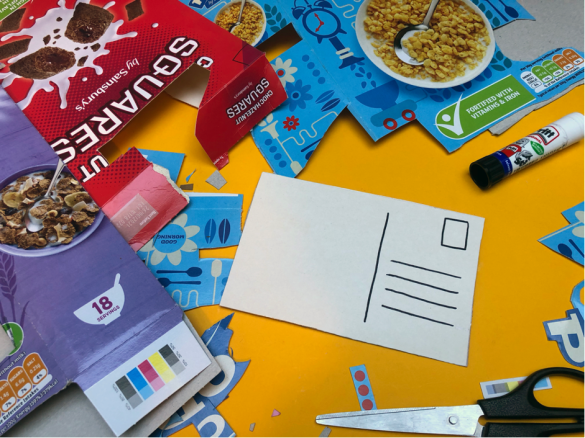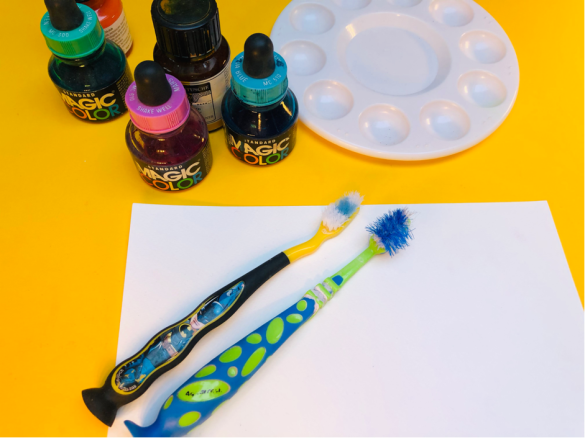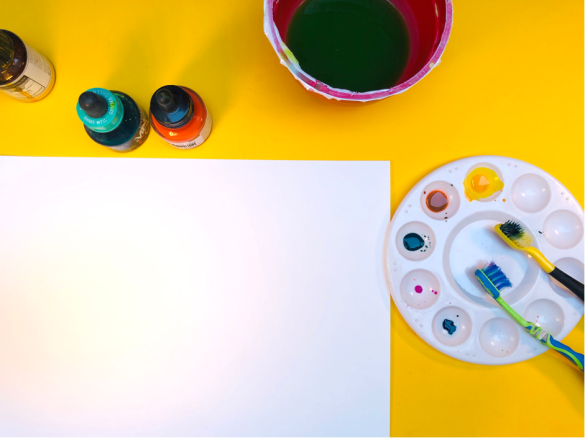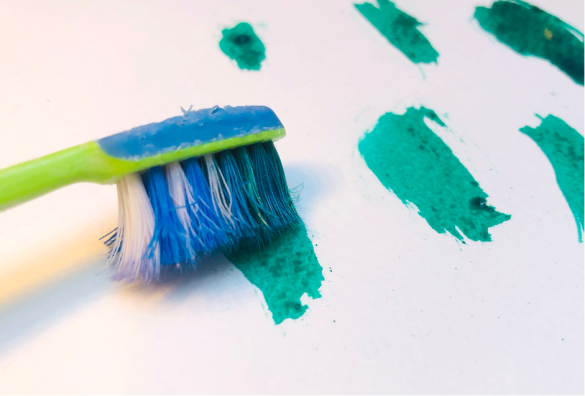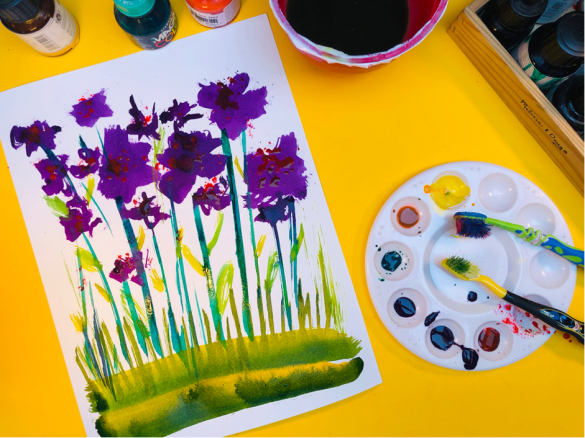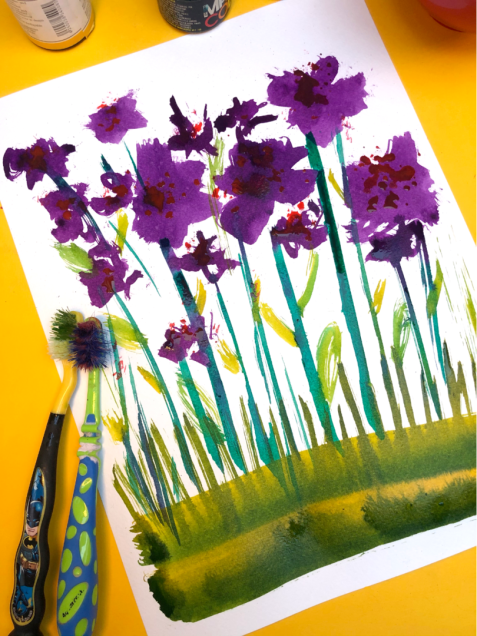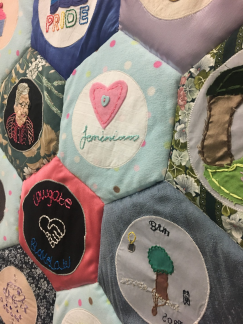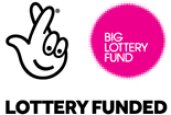9 May 2023: Producing Place: making work in place and space contexts
Producing Place Map: Erin McGrath
What does it mean to work in place and space contexts?
Why is it important to artists?
To the communities they co-make work with?
How can the physicality of a place inform work being made, the approaches used to make that work, and the development of the artist in residences practice in the longer-term?
In 2021, we received organisational development funding from Arts Council England to develop Producing Place: our artistic strategy for work in place, space, and site-specific contexts. This allowed us to test a new, draft framework for how Monkfish supports and collaborates with artists and communities in place, space-based and site-specific contexts.
An important part of this new framework was the development a Producing Place Spectrum that we hoped would be a way of providing a tool for creatives to reflect on the processes involved in developing work in physical environments. As part of developing this resource, key questions we want to explore are:
- How we contextualise place and space working. As creative producers we will often talk about ‘site-specific’ and ‘site-responsive working’, but these terms are often used interchangeably. How does the lived experience of practitioners help us to pin down some of these concepts?
- What the practical considerations are in preparing and making work in often novel places and spaces
- Ownership of space and its impact on the making of work (including co-making and/or socially engaged practice)
- How the place/space approach supports or challenges the artist in the development of their practice
Producing Place residencies in context
We set out in early 2022 in choosing Saltwell Park bandstand, Gateshead as the focus for the first of two residencies. We chose the open, free space of the bandstand and worked with the local community to engage in the conversation. We worked with Tyneside based artists Sofia Barton and Damien Wootten to explore what the park meant to the local community through a series of workshops culminating in a visual art exhibition in the park in September 2022. However, whilst the residency opportunities were enjoyed by a range of community groups, it was still difficult to apply the Producing Place spectrum as a tool for reflection. We needed to go deeper and to speak to a whole community of creatives themselves to get a wider set or perspectives going forward.
Producing Place interviews
Residency 2 focused on talking to a wide range of creatives. We wanted to share the draft of the Producing Place Spectrum with them, and to gather their responses as a way of moving the dial in creating a tool or resource to develop the spectrum further. We commissioned artist Erin McGrath to creative an easily accessible, visual ‘resource map’ to encapsulate some of the key ideas and suggestions shared.
Our creative producer Beth Coverdale interviewed 11 creative practitioners from across the UK. They ranged from visual and multidisciplinary artists working in everything from community centres to historic buildings and national sporting events, to creative producers working for arts oragnisations, independently and/or on socially engaged projects. We interviewed both artists new to working in physical spaces to those with previous experience. They were invited to look at the spectrum and give us their feedback. We asked them if they recognised their work on our spectrum as follows:
Is your work….?
Table 1: Producing Place Spectrum (current draft)
|
|
|
|
|
|
|
|
|
Space |
Place |
|
||
|
Category |
Site responsive |
Site specific |
Place-based |
Embedded |
|
|
Nature of space |
Designed |
Functional |
Defined, pre-existing |
Communal |
|
|
Access |
Transactional |
Accessible |
Negotiated |
Negotiated |
|
|
Significance |
Undifferentiated |
Open |
Specific |
Complex |
|
|
Engagement |
Physical / Functional |
Informed / Adaptive |
Consultative / Reflective |
Co-produced / Representative |
|
|
Distribution of agency |
Accommodative |
Artistic |
Collaborative |
Collective |
|
|
Type of capital produced |
Financial / quid pro quo |
Cultural |
Cultural |
Social |
|
|
Example venue |
Venue or gallery |
Church or village hall |
Building, street, neighbourhood |
Community |
|
|
|
|
|
|
|
|
Where interviewees placed their work was wide ranging with straddling of categories. There was a widely held aspiration amongst interviewees for their work to be in the embedded category, but several practitioners talked about the challenges of resourcing this approach long-term and in a way that was meaningful for all parties involved. One interviewee shared their views:
“….It takes a lot, a lot of time to get to know the area and the people here (local community). And so depending on the type of project that we're doing depends on how long that process can be. And ideally, that would be a long-term process of an artist engaging with the area and integrating, but that often is not the case. Partly because of finances, partly because of time constraints.” (Int.5)
Producing Place: Key themes from the interviews were…
Ownership…
Interviewees were mindful, and genuinely committed, to honouring any existing relationships that a community had with a place or space from the start of any project. There was a need to negotiate often nuanced and complex relationships with a place or space, and sometimes this needed to be an ever-evolving process:
“And I think that's also something that's very important, to look at any place-based project with something that's more broad than specific - because everyone's going to look at it in a very different way.” (Int.3)
Honesty, transparency, and the development of trust were seen as crucial:
“I think whenever you're doing something that is sustained over a period of time, what you hope for is that participants won't just get a ‘sense’ of ownership - I hate that - a ‘sense’ of ownership and a ‘sense’ of belonging, but they really do feel like they have the ability to take a project in the direction they want to take it in.” – (Int.7)
Interviewees were also mindful of, where possible, avoiding the ‘parachute problem’ whereby an artist engages with a space for a short period of time at the risk of neglecting what the place or space they are working in might mean for the local community:
“Yeah, I would say we don't always work directly with artists. Sometimes we invite artists for specific projects we're working on where the themes have come up in local conversations. And so our programme in general, we try to build around the themes and issues that are being discussed in the local area. We know those themes because we're part of the organisations and we're in conversation with local residents regularly to understand where people are at and what they're wanting to discuss. So sometimes, it's not an artist coming in and saying ‘I want to do this’. Generally it's not that at all, it's us inviting artists who {...} really have an understanding and a compassion at heart for what the community is about and what's going on.” (Int.5)
Working in new places and spaces sometimes gave interviewees the opportunity to create new models of working outside of the sometimes-exclusive arts venue eco-system. This process allowed for new opportunities and creative approaches. It also had the potential to widen accessibility from the point of view of both the practitioner and audiences:
“I think there's definitely something about found space or new space or place or all of those words. They have a different ownership and they have a different permission as to who can work in them. And they have a different model and methodology of working, like I have a disability and health condition that has, I think, has meant that some of the very structured theatre models have felt quite isolating. And I think when you go into place and space, like often you're making your own model each time and that has been a very interesting and exciting thing.” (Int.6)
Preparation…
Interviewees talked about the importance of spending time in the space, absorbing it (and navigating the limitations of being able to do this). In some cases, exploring how the place or space could be a protagonist itself for work developed:
“… I think for us, like, the most important thing was that we each had that specific interaction with the house because the house was becoming like - the house was mainly set up as a character. So it was not just, you know, a space that you go into and you do your thing in. We were like, ‘how do we really facilitate this concept that this thing, this piece of structure is alive?” (Int’s 9&10)
Again, many interviewees reflected on the importance of encountering the people who use the place or space as core to any preparation for socially engaged work. There was much discussion about people being at the heart of any creative process:
“So as part of my community freelance practice, I'm developing a model of creative engagement that considers concepts of community art and the ‘happening’. So in my approach, it's the act of a group of people coming together to engage in a specific subject matter, activity or idea around a location or a venue and that's the art and then anything that is tangible visual audio, new ideas, new works, anything that can be exhibited or used in a museum space are viewed as the evaluative product of the artistic act. So that puts people at the centre of my practice.” - (Int.2)
Resources and conditions to meet deliver outcomes…
Interviewees were clear about the practical challenges of making work in physical place or space contexts. There was often a tension between the aims or aspirations of a project and what could be achieved. This requires often navigating the hopes and expectations of both the practitioner and other parties involved. Restrictions can come about due to timescales or funding requirements that directly impact how participants experience a project:
“...it was that - those pragmatic things, I guess, took much more time. {...} that does impact on the young people's ownership of the project, because there was a long delay between me getting the artwork complete, and getting the children excited, to when I could actually install it, which then impacted about ‘oh, right, it's now the holidays so I can't easily bring all the groups to come and see it. They're gonna have to visit independently’. That might be my lack of experience. But I think it reflects something bigger, which is maybe timelines are often not the most realistic. Sometimes because of people's enthusiasm for things. But also, I think sometimes because of the way funding works.” (Int.7)
Additional building regulations and risk assessments that come with working in new environments were also identified as a challenge, and that there was little readily available support for dealing with this. There was often an assumption that practitioners would work on their own in resolving these issues:
“So I'd say that assuming that the artist is purely a creative and isn't coming from any commercial or like building background or engineering background. I've had a lot of experiences where there's like this assumption that I understand, like I said, building regulations, for instance, or even just health and safety things that you should know. I didn't understand. So having that made very simple, so that artists can actually focus on their talent and what they've been commissioned for, which is the creative and all the other stuff.” – (Int.11)
Finite resources often also means that it is difficult to translate plans into realist to a place-based context, which sometimes means that the quality of the work is compromised. It also led to yet further unpaid labour on the part of the artist or producer, already a considerable issue in terms of generating artistic output. Sometimes very difficult decisions must be made about what to prioritise. One interviewee shared their experience about a recent project:
“And like it's quite a tight budget, and you know we're already - we're already getting underpaid for the work we're doing. And I guess because it's space and place based I kind of thought that there would be a better understanding of what it means to do something off-site and outside of the gallery. There seems to not be, so my advice to kind of creative producers and organisations would be to have that kind of foresight. Basically, accessibility has become this kind of like, lumped on burden. And it feels kind of sad because the kind of calibre of the project is kind of being compromised to make it accessible - when from my experience, you know, you put in extra effort, time and money to make something as exciting and accessible for all. So lots of corners are being cut to kind of produce this place-based project. Lots of corners to our creative practice are being cut {…} And there was not really a deep and embedded understanding of what it means to be out in space, and dealing with all those kinds of like, I guess all those possible disruptions to place or those kinds of like blockages or like how did we talk about it before? Well, just the things that you should consider with hindsight, you know, weather, access, time - all that kind of stuff, there was not really much consideration of those things.” (Int.8)
Working in this way…
Despite the challenges and complexities, there was a shared appetite to further explore working in place and space contexts. The space or place itself can delight and surprise the practitioner, again in its offer as a potential muse or protagonist for new practice opportunities:
(Of working in a 17th Century barn) “But it sits on Hadrian's Wall, almost directly on the path of Hadrian's Wall where - in a spot where you can't see the wall anymore. And so, there's this huge rich history of stuff and it just, it just called to us to do this installation in the barn. And I - it was - for me it was inspired by this little bit of - there was an old door catch you know, just still sitting there doing its job after 2-300 years {..} and I tapped it with my fingernail and it was ‘oh, that's that that's unexpected. It sounds like a marimba or something. It's like a really interesting little -’ - it had a really clear tone to it {..} I thought ‘what if I made music purely out of sounds that are there and don't use any musical instruments at all?’ Just so the - ‘if that makes a sound, there's probably other things in the building that also make sounds and there's definitely objects that have been left around’. {..} It was a fantastic experience for me to do, and the amazing thing is that I went around recording all these things, brought them in the house in the midst - into my studio and made this piece, set up some speakers in the barn. As soon as I played it back, it just - it just belonged in there. It just sounded like - it was, it was incredible. It was this sound, this music, but just - it just felt like it sat perfectly in the building. And I don't know whether that's because the sounds would come from the building or because of my own kind of familiarity with the space or maybe a combination of both, but it just worked so well. And I thought - that was the first sort of time I had done that and I just thought ‘yes, I want, I need to do more of that.” - (Int.4)
Opportunities to work in new physical environments can be transformative. The challenges of a physical space or place can be exciting, pushing the artist or practitioner to respond to constraints and to be more ambitious:
“There's been a few of those {projects} where you're trying to bring often like a sense of creativity and anarchy to an environment that is not designed for that. But always think that what theatre makers do in unusual buildings is really interesting, which is they take a building that's designed for one purpose, and they say it's not going to be for that anymore.” (Int.6)
Dream projects…
Several interviewees shared their dream projects for working in new places and spaces. There were aspirations for people to be invited to see or experience a new place or space from a fresh, perspective, with play and fun and the heart of it:
“I love the idea of doing a city-wide show or at least an area of a city-wide show where you know, it's potentially self-led and people have to perform certain tasks around a city and something kind of collectively bringing it back together again at the end, with the idea of letting people loose to look at their city differently has always appealed.” – (Int.1)
There was also an understanding of the potential that creatives working in places and spaces can have in supporting the longer-term development of the area, often supporting communities to find/share their voice(s) and to explore shared concerns in supporting local area development and sustainability:
“I think in Shieldfield (Newcastle) I love the diversity of the community that we have, I love all the people that we meet. And so, I would just want more of that. I would want people to feel more open, to share their lives with each other in creative means. I think the community we have is fabulous and I am sure that is the case for a lot of different place-based arts projects and art organisations. I think that the thing I would want or dream for is - is for that to feel sustainable and secure.” – (Int.5)
In conclusion….
Producing Place as an approach has the potential to provides a much-needed space for creatives to reflect on their experiences to date in making work in places and spaces. Most participants said they found it very difficult to find time to reflect on their approaches to place and space working, and to consider what impact working in physical environments has on their creative practice development. At the core of much of what is happening is socially engaged practice, whereby artists are sharing their skills as agents of positivity and change within community and co-making contexts. This is where much of the demands (and indeed funding) for work comes from. It is therefore often difficult to spend time immersing oneself in the physical environment, and to focus on making work in response to physical space or place on its own terms. This therefore makes ‘pinning down’ where a project is on the spectrum difficult. It will be interesting to see how Monkfish can continue the conversation going forward about how we contextualise place and space working. Doing so would hopefully provide both theoretical and practical help for creatives in considering how to approach their next project.
Blog piece: Claire Murphy-Morgan, Artistic Director, Monkfish Productions
Interviewer: Beth Coverdale, Creative Producer, Monkfish Productions
Artwork: Erin McGrath, Producing Place Artist (residency 2)
Creative Associate for Producing Place : Nick Malyan
Trustee Lead for Producing Place: John Bowers
Many thanks to all our Producing Place interviewees: Emma Brand, Rachel Eleanor Brook, Nikita Ghate, Kit Haigh, Lydia Hiorns, Joe Hufton, Elizabeth Kane, Kitty McKay, Seren & Sam, and interviewee who chose to remain anonymous.
Spring 2022: Sofia Barton: Our new Producing Place Artist!
Sofia Barton is a Punjabi artist from Newcastle upon Tyne who creates bright artwork which is heavily influenced by nature and heritage. Her work is multidisciplinary and consists of paintings and digital content.
Inspired by her grandfather’s old collection of Indian Matchboxes, she created a series of
images based on locations across the UK. This rich influx of diverse cultures recreated into Victorian matchboxes portrays a careful study more reflective of a modern society. Historical landmarks, local sayings and folklore are carefully added onto these illustrations. As a workshop facilitator, her practice revolves around social art, both participatory and inspired by context of places, merging the traditional with contemporary imagery in community settings.
Clients have included Northern Pride, Wild in Art and Love of the North.
Exhibitions have included Spilt Milk Gallery, The Baltic Centre for Contemporary Art, Saatchi, and Gallery 45.
About working with Monkfish Productions
Sofia says: "I’m really excited to start working with Monkfish Productions team on the first Producing Place Residency. Saltwell Park has been a social hub for over a century and I want to help celebrate that, by helping create beautiful and bright artwork with the rich variety of communities that visit and live in the area.
The artwork will be based around the bandstand in the Victorian park, where people can gather, everyone is welcome, all age ranges and backgrounds, to make some art together."
Looking Back Over 2021: Our end of year blog...
It’s been a whirl of activity for Monkfish this year. And here’s a whistle stop tour of what we’ve been up to:
January and February 2021
We started off the year by continuing to deliver creative arts workshops for Going the Social Distance: an online arts and mental wellbeing project for young people to support us all in living through lockdown and staying in contact with each other. Thanks so much to the creative team Josie Brookes, Jennifer Ironside and Kema Sikazwe for such a great online programme of activities. Thanks to National Lottery Community Fund for making this project possible.
We were honoured to be part of Newcastle City Council’s Holocaust Memorial Day programme for January 2021. This year’s theme was #BeTheLightInTheDarkness and many thanks to Andy Berriman and Sky Hawkins for the wonderful poetry film they made for us. Huge thanks to Alison Flannagan-Wood and colleagues at Newcastle City Arts Team for inviting us to be part of this important programme once again.
We were also delighted to be the first ever arts organisation to sign up to Artist Union England’s Good Practice Charter we were thrilled and delighted to be part of this. Thanks so much to Theresa Easton and colleagues at Artist’s Union England for giving us this opportunity.
Spring time projects
Huge thanks to textile artist Melanie Kyles and all the young people at Projects 4 Change for their wonderful work in making fabric gifts for older residents of The Dales Sheltered Scheme, Cowgate for Crafted with Care Project, funded by National Lottery Local Connections Fund. Big thanks to Susan and all the residents at The Dales for making us so welcome. Despite the Covid-19 limitations, we were able to make connections which are sure to continue Huge continued and massive thanks to Kelly Coates and everyone at P4C – we continue to be blown away by just how amazing you all are, and all the joy you bring to Cowgate and Blakelaw
Huge thanks to musician and soundscape artist Jayne Dent who created her wonderful sound piece Augmented Realities inspired by Producing Place. It gave us a wonderful opportunity to reflect on how places and spaces can inform the imagination.
And as we moved into summer 2021…
Huge massive thanks to Arts Council England who gave us 12 months Lottery Projects Grants funding to develop our organisation. Thanks also to Laura Cresser, Combined Arts Relationship Manager at Arts Council North, who continues to be a wonderful advisor and source of guidance. As Claire, our Artistic Director, saw her circumstances change this year with her new full-time research post at Northumbria University, we were on the look-out for a Creative Producer to lead on the coordination of A Little Bit of Good in the World and Producing Place. We were therefore thrilled that, from July, Beth Coverdale was able to join our creative team.
And autumn….
Beth has been busy this autumn doing wonderful work on both of our key artistic projects, meeting a wide range of communities in Gateshead, facilitating a community event at Saltwell Pak Bandstand on 21st November to gather ideas for the first of our Producing Place artists residencies planned for 2022 (watch this space). Thanks so much to some wonderful local community groups and organisations who have engaged with the project so far, and we are really looking forward to working with you all in the year ahead. Thanks so much to Karolynne Hart and Gateshead Council colleagues who continue to support us with this project. Thanks to Samosa Sisters for providing a lovely warm treats and snacks for all our visitors on a cold day, and to ReCoCo for help with genuine support Many thanks to local artist Damien Wootten for all the wonderful doodle and draw activities which generated lovely art work and drawings from participants of all ages on the day. We’ve generated lots of lovely ideas which I am sure will inspire our artists coming up
Damien was also instrumental in kick-starting our series of young people as stakeholders’ workshops for A Little Bit of Good in the World with Projects 4 Change. It was wonderful to spend a warm, sunny July eve in Betty’s Hut and Garden in Cowgate doing some doodling and drawing and considering what it is to be creative. Thanks to both Helen Shaddock for her session on the theme of Connection and to Kema Sikazwe for his workshop on the theme of Critical Thinking this autumn. Ideas generated from these workshops will help Monkfish to consider how we take #ALittleBitOfGood forward and how young people can continue to be at the heart of the thinking and vision for the project. Thanks to Community Foundation of Tyne & Wear Northumberland for supporting this invaluable work.
Speaking of both projects and organisational development, our Board of Trustees have been busy considering what our key priorities are for how we go forward, and these ideas will be taking shape in early 2022.
And shout outs to some more great people….
We want to say a huge thanks to Amy Lord, our Social Media Associate, who continues do amazing work this year promoting all that we do, reaching more audiences than we could have ever hoped to have reached, and going the extra mile with generating colourful, eye-catching content for all our social media channels.
Huge thanks to Nick Malyan, our Creative Associate, who continues to provide us with insight and support, and who has been instrumental in contributing to the development of Producing Place.
Thanks to Photoline Ltd for all the kind donation of paper and materials for our workshops, to Mark Thompson at VODA for guiding us through our first year of accounts as a newly registered charity, and to Talbot-Jones Risk Solutions for insurance services and advice.
We were so sad to say farewell to Commercial Union House this year, but even as we are now all working from home, the spirit of the Orbis community shines on.
-
Monkfish will be starting to get back into the swing of things from Tuesday 4th January 2022.
We’ll leave you with the final stanza from a poem written by the young people for Going the Social Distance:
“Together we are strong, so don’t give up:
It doesn’t take much to reach out to cheer somebody up”
We wish you all strength, joy, and hope in 2022.
Claire, Beth, Susan, John, Mark, Simon, and all of us at Monkfish x
Introducing Mark - our next Trustee in the spotlight!
· What made you want to become a Monkfish trustee?
Before I became a trustee, I had been working with Monkfish for nearly 7 years. Claire contacted me out of the blue as they were looking for someone with expertise in measuring emotions, and somebody (I don’t think I ever found out who ‘somebody’ was) pointed in my direction. They were interested in measuring how audiences ‘felt’ during performances and whether there were ways of measuring these feelings. I am a Professor of Psychobiology, and my research involves understanding how emotions ‘get inside the body’ and change the way we feel and behave. Mostly my work involves measuring stress, but I thought some of the techniques I use could be adapted. I had never worked with a creative arts organisation before (and I’m sure they had never worked with anyone like me before). I have always been enthusiastic about applying research and using my expertise in different areas, and this was certainly a different area. So, we started developing a few ideas, and #PsyFeedback was born 6 years ago this month! Monkfish recruited some willing performers who were developing their work and performing at the ARC, Stockton at Scratch Night. I never even knew what a Scratch Night was, but when I learnt about the concept, thought that in addition to the subjective feedback, the performers could get a handle on how their audience changed emotionally and physically by measuring psychological and biological responses in their audiences using simple questionnaires and heart rate / blood pressure monitors. We could then help them match these changes up with their performance – how did they want the audience to feel at particular and did their audiences change accordingly? Our approach was a bit clonky – the only technology we had were arm cuff monitors which take a few minutes to inflate and make a loud buzzing sound. Nevertheless, when prompted, we got the audience to record how they felt, and set their monitors going – it sounded like the inside of a beehive! I recorded all the data and then presented it back to the artists so they could use it as part of the performance development.
We repeated #PsyFeedback the following year. We refined our approaches and worked for longer alongside the artists so that they could incorporate ‘measurement points’ into their performances. We also measured biological and psychological changes in the artists before and after their performances - guess what, performing makes your heart rate and blood pressure go up!! The last few years have seen some amazing changes in wearable technology – loads of people where smartwatches and I use them in other research projects I am running with people in the emergency services. So, if we develop this further we would be able to do some really interesting and detailed stuff, and create a research buzz without the audible buzz – watch this space…….
I’d never worked with a creative arts organisation before, and I have never been a trustee before. My first foray went quite well, so I thought being a trustee would be an interesting thing to do. I had also spent time with the Monkfishers, liked them and what they do; I was very honoured to be asked, so here we are.
How have you been able to use your skills and experience in the role?
I was certainly able to apply my research skills into the #PsyFeedback project and we achieved something extremely novel and interesting to artists and venues. Much of the work that Monkfish do concerns people and improving wellbeing, so I think as a psychologist, I can offer a practical research and theoretical perspective on some of that. I have also used my networks of psychologists and practitioners to promote the work that Monkfish do and connect them with people who could facilitate this work or benefit from it in some way.
What has been the highlight of your time with Monkfish?
It has to be developing the #PsyFeedback work. It was so novel and inter-disciplinary and pushed at the boundaries of what Monkfish and I had done before. I really enjoyed applying my research expertise in a completely new area and explaining some of the research concepts to people who wouldn’t normally encounter this kind of thing made me think about ways of making these techniques practically useful and accessible.
What are you looking forward to in the future as the organisation develops?
From a research point of view ‘A little bit of good in the world’ has some overlaps with my work – I don’t just stress people out, I also try to develop interventions that can improve and promote wellbeing. But I also love the ethos of the project, the world really does need a little bit of good in it, and we need to take the time to acknowledge and appreciate that.
10 November 2021
Introducing Simon - one of our Trustees
What made you want to become a Monkfish trustee?
I’d been aware since about 2007 of the amazing work that Monkfish had been doing on Tyneside and beyond and so I was delighted to be invited to perform “Krapp’s Last Tape” as part of the Pas Moi project that Monkfish produced in Broadacre House Newcastle in 2016.
In 2017 I co-produced “Sound Level” – a series of sonic explorations and performances, again in Broadacre House. As they were moving to charity status I was able to help in shaping and structuring the new charity, based on my experience as CEO of The Josephine and Jack Project. Last year, I joined the board of Trustees.
How have you been able to use your skills and experience in the role?
I have many years’ experience of working in the public and third sector, particularly in funding/strategic roles and my recent experience with The Josephine and Jack Project means that I can help Monkfish navigate some of the issues that any new small charity faces.
What has been the highlight of your time with Monkfish?
I’ll always be grateful for the opportunity that they gave me as a performer to play Krapp, supported by the brilliant Andy Berriman.
What are you looking forward to in the future as the organisation develops?
What I love about Monkfish is that there is a developing artistic trajectory. The seeds of what we do have always been there but now, under Claire’s leadership, those themes of people and place, of creativity and community delivered by artists from a wide range of disciplines have a coherence that the recent Arts Council funding will enable us to articulate and develop.
I can’t wait!
26 October 2021
Introducing Beth - our Creative Producer
Hi there, Claire requested a little intro to me - so here goes! I’ve been working in the arts in one way or another for about 16 years, currently as a creative producer. My background is in drama & writing (I started out working in youth theatre), and I’ve held coordinator/producer roles with Seven Stories the National Centre for Children’s Books and Helix Arts as well as working on freelance projects. I often explore power through stories in my work - whether that’s amplifying young people’s voices alongside professional authors in exhibitions, or working with groups to navigate difficult experiences using fictional narratives.
Earlier this year, in response to global events, I left the brilliant Helix Arts to set up a new group called Love is the Map with around 25 friends. Our first event, A Community Party for the East End, took place at the Cumberland Arms in August - we worked with local community & faith groups to offer a space for people from different backgrounds to come together & celebrate, get creative, take part in discussions and acknowledge struggles after a difficult year. You can see what we got up to in our digital storytelling video below:
It’s been a couple of months now since I started my role with Monkfish Productions in August, and what a fab journey it’s been so far!
A Little Bit of Good in the World has seen me visiting the wonderful Betty’s Hut in Cowgate, where I had a look around the allotment with Kelly from Projects4Change and heard all about their amazing work. I can’t wait to meet the young people of Cowgate & and see what they make & discuss with artists during our workshops on the 4 Cs - Creativity, Connection, Critical Thinking & Citizenship.
Alongside that I’ve been working with Claire & the team to get to grips with the Producing Place framework, and to start planning two exciting artist residencies in Gateshead. We’ve had some really interesting discussions so far about different kinds of place-based projects, and are excited to involve local people in creating the artist briefs.
What’s really stood out on my journey with Monkfish so far is the pleasure of working with such a lovely creative team, who are committed to creating great work and also to supporting artists. 2021 feels like a really important time to be thinking about the positive differences we can make in the world and our communities - and A Little Bit of Good & Producing Place are both perfect ways to do just that.
7 October 2021
What made you want to become a Monkfish trustee?
I became familiar with the work of Monkfish when I was a coach for Claire on a leadership course she was on. At that time it was 'parked' as an organisation as Claire was busy with other work initiatives, but then it rose like a phoenix from the ashes and became the vibrant and forward thinking organisation that it is now. Claire asked me to become a trustee, knowing that I was an advocate for the impact of the arts on communities.
How have you been able to use your skills and experience in the role?
I am an educational consultant, but believe that learning is for life and not just for young people. I believe I bring that view with me and that it fully supports our Monkfish mission statement ' to support individuals to unlock their creative potential'. For me, the arts should be accessible to everyone, and learning and participating in the arts requires the ability and a willingness to surrender to the unanticipated possibilities of the work as it unfolds. It's magic
What has been the highlight of your time with Monkfish?
Sitting in a wooden shed in Clara Vale listening to the sound pieces from artist Helen Collard for Pitch, and meeting the local villagers in the village hall before the event, where we walked to the shed along a path in the darkness, which was illuminated by little lights.
What are you looking forward to in the future as the organisation develops?
Giving something to communities, through experiences, participation, collaboration, creativity and actions, so that we can all say that we have brought a little bit of something good to their worlds, and giving artists opportunities as a major part of that.
25 May 2021
Monkfish Annual Report 2020/21
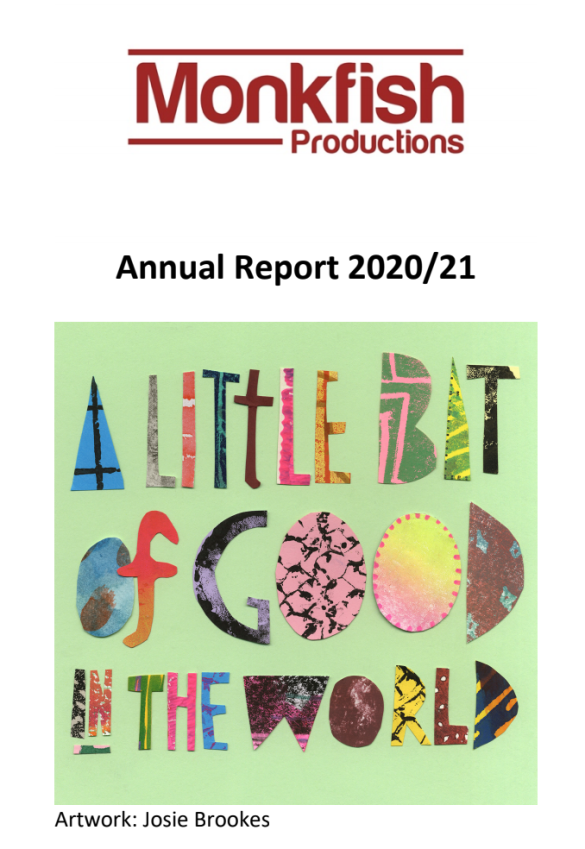
24 March 2021
“From a Gourd, Comes a Horse.”
A response to Jayne Dent’s Augmented Reality (part two is around you)
(part of Monkfish’s Producing Place programme)
By Claire Murphy-Morgan (Artistic Director)
The background
For a while now Monkfish has been working with artists to make new work in response to places and spaces. This usually involves a specific physical environment and working with the community connected to it such as a workplace, a village hall, a community centre or a nature reserve.
So when I received an audio commissioning opportunity as a birthday gift, I jumped at the chance to pass this onto Monkfish so we were able to work with another exciting artist and them if they would like to identify a place or space for a change: somewhere that struck accord, real or imagined.
The artist
Jayne Dent is an interdisciplinary artist, musician and composer based in Newcastle upon Tyne, working across sound, performance, print and digital collage. She regularly performs and releases music as Me Lost Me, and delights in experimenting with genre; taking influence from folk, electronica, art pop, ambient and noise music to create a beguiling mix of soaring vocals, synth, field recordings and hypnotic rhythms* I had the pleasure of seeing Me Lost Me live at Cobalt Studios in Newcastle pre-pandemic, and an album features in our household vinyl collection.
Jayne and I met on Zoom a couple of times and chatted about place and, in light of what has come to pass in the last 12 months, the notion of liminality: places and states that exist in between. Jayne went away and developed some ideas, sending across a sound file and accompanying image with the idea of making a piece to experience whilst out walking.
The work
Augmented Reality accompanies the listener through liminal spaces of their choosing, actively encouraging the interruption of sounds and impressions from the environment around the listener to ‘finish assembling’ the piece*
It embraces zoning out and distraction as much as it encourages us to notice things more vividly, the traffic, birds and other environmental sounds and sights that greet us at the bus stop or on our walks. It is constructed of almost entirely digital sounds, with synthesised orchestral instruments as well as artificial static and synthesisers. The only organic sound we hear is the voice, which comes with layers of digital distortion and texture embedded within it, acting as the bridge between the listeners environment and the digital augmented reality space*
The piece is in part inspired by the practice of building grottos and follies; superficial and decorative buildings and augmentations to the landscape by wealthy landowners which give the illusion of a history that is not present, sometimes already built in a romantic ‘ruined’ state. It is inspired too by tales of defiance of trespass laws, roaming and rambling and the importance of reclaiming common land for public use. The audio work is accompanied by a lino print which acts as both a graphic performance score and word-cloud, titled “Augmented reality part one (part two is around you)”*
Claire’s response: Augmented Reality (part 2 all around)
So on a sunny midweek afternoon, I don my headphones and head for the local park. Spring is all around us: the cutting March wind and the yellow burst of life. But having just lost our beloved dog a month ago and being surrounded by waggy tails welcoming the vernal equinox, I still feel the sting of winter.
My walk to the park is certainly augmented: bigger and louder than usual. The sound of children playing in the nearby school playground is pronounced between the peaks and fall of the sonic landscape, and the postman shouting at someone to stop looking at their phone as he was getting out of his van (I am not sure if it was me that he was shouting at) is stereophonic. A gorgeous Jack Russell dog looks me straight in the eye at the end of its lead as it trots round the corner with its human. It looks at me as if it can sense that I am a dog person without a dog. It is at this point that I realise that the instruction to get out and walk has augmented my sense of loss: that I have to find another purpose for walking.
In listening to the soundscape I find myself using my iPhone to take pictures that resonate with the experience of listening and to gather ideas in response. This makes me cross with myself that I didn’t do the proper thing and bring a notebook to jot things down instead. But true to the purpose of the sound piece, I notice things. I notice the tall CCTV camera bearing down over the courts but still don’t really notice what the courts are for: tennis I think, but it might be basketball. The audio piece is teaching me what I do notice and what it says about my priorities and values as an individual; swept along by the panic of mass surveillance and creeping authoritarianism whilst forgetting to play team games and have some fun.
Then I realise that this is evidence that the inspiration for Jayne’s piece is seeping through. I realise I am walking in a park gifted to Gateshead by rich Victorians. That my listening experience is private, separating me from the public space via a wall of sound, whilst ironically connecting me to natural space through a variation of drowning out people’s voices or mediating them within a soundtrack. The vocals on the piece are ghostlike, to give the illusion that the otherwise synthesised sound remaps a landscape that once was. Or an idea of the landscape that once was where no land was gifted as it already belonged to everyone: the days of common land for common purpose, with private property as alien a concept as the sounds in my headphones would be to the nearest passer-by.
In The Book of Trespass, Nick Hayes writes:
“These are the stories of the commons, folk stories, the stories that come not from the castle, but from the plains, the collective voice of the people. They are the stories of insurrection and civil disobedience, the histories of the collective vision that won us our rights, the stories that are rarely told or taught in schools. They defy our division, they tell us that the people, as one, have power.”
But seeing the CCTV camera overlooking the commoners on their afternoon stroll, I am struck by the implications of not sharing stories and spaces, as Hayes points out:
“The fences and walls that are strangling our land are constricting our connection to the stories that can heal us, the magic that can link us once again to the land and to each other.”
It is then perhaps somewhat ironic that I end my listen at the entrance to a garden set within the park dedicated to the friendship between this town and a town of similar size in Japan. Young saplings and rocks symbolise mountains and rivers, a small stone lantern stands by a round of gravel to represent a tea ceremony by a lake. I am again struck by the idea of an imagined space, in this instance transcending the separated-ness of a rich man’s folly to arrive at a place of commonality.
The information board sets out a map of cordiality numbering the landmarks and ending with the Japanese proverb: “From a Gourd, comes a Horse.” This vivid image explains the idea that good things come from unexpected places. I am immediately reminded of the last 12 months, and the goodness and commonality of so many people that has found its way through: over the wall, under the fences and around the divisions that so often permeate our daily life. I think of the liminal nature of our current time: its problems and all of its possibilities.
*These are Jayne’s words that she has used to describe her work
Listen to Augmented Reality HERE
Reference:
Hayes, Nick (2020): The Book of Trespass. Bloomsbury Publishing
11 February 2021
On this cold February half-term, why not have a go at these 2 creative activities from our Going the Social Distance artist Josie Brookes: you could also brighten up someone else's day too with a bright, welcoming poster or a personalised gift!
8 February 2021
It's #HeartUnions week, and we are delighted to share the news that we are registered to join Artist's Union England's Good Practice Charter. Our Artistic Director Claire tells us more in this short film:
and here are the 6 core principles of AUE Good Practice Charter:
6 January 2021
“At such times the universe gets a little closer to us. They are strange times, times of beginnings and endings. Dangerous and powerful. And we feel it even if we don't know what it is. These times are not necessarily good, and not necessarily bad. In fact, what they are depends on what *we* are.” – Terry Pratchett
I think that this quote sums up so much about the current situation that we are all in, the challenges that we face, the choices we have and the hope and optimism we can choose to hold in our hearts for the strangest of starts to a new year.
Monkfish is ready to face the challenges, and to use our creativity and resilience in going forward in 2021.
Looking forward to the next couple of months, we continue to run sessions with young people as part of Going the Social Distance online workshops programme. We hope that these sessions will continue to provide much needed respite for participants with creative approaches to dealing with the current turbulent times that we are in. We have had great fun so far, from creating characters and a group poem, to bucket lists and origami cats! We have also had the opportunity to explore anxiety, pressure, things we do to cope and how to be a good friend. We are looking forward to more great sessions with artists Josie, Kema and Jennifer: WARNING: sessions may contain snacks ;). Many thanks to The National Lottery Community Fund for supporting this project: follow #CommunitiesCan on social media.
We are honoured to be part of Newcastle City Council’s Holocaust Memorial Day 2021 programme. The theme for HMD2021 is Be the Light in The Darkness. We are currently working with artists Andy Berriman and Sky Hawkins to make a film that celebrates Newcastle as a city of hope and light: it will be going live here and on social media on Holocaust Memorial Day which is 27th January. Find out more about HMD2021: https://www.hmd.org.uk/
Monkfish is currently developing Producing Place: our approach to working in place and space contexts with artists and communities. People may not be able to be in physical places that they know and love, but those places and spaces have not left them! We have been working with our Creative Associate Nick Malyan and Monkfish Associate Artists in creating a draft framework for how Monkfish works in physical environments, and how we support artists and communities to maximise the creative opportunities of us working together. This strand of our work, and how it shapes who we are as an organisation, will become ever more important in the year ahead.
So times not all good, but not all bad. Throughout 2021, I suspect that Monkfish will feel the celestial pull of the universe getting ever closer.
Claire Murphy-Morgan (Artistic Director)
17 December 2020
Einstein said: “In the middle of difficulty lies opportunity.”
We would be hard pressed to find a better quote to round off 2020 for Monkfish.
This year we have been able to pull off some of our best work yet: not bad for a new small arts charity in the North East of England in the middle of a global pandemic.
Our thanks to so many people who we have worked hard this year in helping us to continue to do what we do. There are a few people who deserve special mention:
Melanie Kyles and Josie Brookes: Our two artists in residence for A Little Bit of Good in the World. Both artists have been amazing leading on the development of this project. We have loved seeing the work that you have done with young people and online. We can’t wait to keep on working with you.
Kelly Coates and all of the team at Projects 4 Change: you are all amazing to work in partnership with and we can’t wait for the next adventure. Thanks so much to Paula Blair at Audiovisual Cultures for the podcast that set out this project so well: it helped us to shape our ideas going forward.
Josie alongside Jennifer Ironside and Kema Sikazwe: our artistic team for Going the Social Distance. Thanks to you all for delivering fun, engaging and supportive sessions for young people online, and for adapting to the virtual world of workshop delivery with all of its challenges.
Thanks alongside Kema to Rachel Brook, Mariae Smiarowska for facilitating A Little Bit of Good workshop as part of Holocaust Memorial Day 2020 – special thanks also to the folks at Good Space for helping us to make the 75 Memorial Flame as part of the HMD2020 national exhibition – you folks know who you are
Thanks to Tom Schofield and all of the students at MA Creative Practice at Newcastle University for adapting our would-have-been Late Shows project with such flexibility under such difficult circumstances. It was wonderful working with you all and we loved immersing ourselves in your creations
Amy Lord, our talented and efficient Social Media Associate who has helped us to reach so many more audiences and to think about how we do it. Thanks so much for your clarity: we can’t wait for more of it in 2020
Nick Malyan, our Creative Associate who has helped us to put the work we do in places and spaces on a much more strategic footing which will help us to improve our offer to artists and spaces/places for some time to come.
Thanks to Alison Flannagan-Wood at Newcastle City Arts Team for all your help and advice throughout, and thanks to Laura Cresser at Arts Council North East for advice and support.
Thanks of course to our funders Arts Council England, National Lottery Community Fund and Newcastle City Council. Thanks to Talbot Risk Solutions for your kind donation, which helped us to deliver our work and came at just the right moment.
Special thanks to Annie Rigby at Unfolding Theatre for the invaluable advice about fundraising: it came at just the right time and made all the difference. Thanks to Northern Stage’s Creative Team support for making this conversation possible.
Thanks to all of our friends at Orbis and Commercial Union House. You are absolute legends keeping it going! Special thanks also to our friends at Skimstone Arts for your generosity in sharing ideas and going forward.
Speaking of which….
We will be back on Monday 4th January 2021.
We have things in the pipeline, and we can’t wait to share them with you.
In the meantime, we want to wish everyone a happy and peaceful end to a very challenging year, and here’s to the next one.
With our best wishes
Claire, Susan, John, Mark and Simon (Monkfish Productions) x
3 December 2020
This week we are getting into the festive mood, so here’s another one our art artist Josie Brookes' activities to get crafty!
In this post we’re making Christmas Baubles – easy to make with stuff you might well already have at home
To make the Christmas Bauble:
- Cut out one side of a cereal box (roughly A4 size) and make patterns all over the ‘cardboard’ side.
- Uses multiple colours to build up layers of colourful patterns
- Using the inside of a cellotape roll or the base of a mug, draw 4 circles in the patterned cardboard.
- Add extra bump to each circle edge
- cut out the 4 shapes
- place 2 back to back and cut out, make sure the bumps match in size when cutting.
- glue both sides together
- using a hole punch, punch out a hole in the protruding bump
- thread through some string or ribbon and tie together
- Repeat the process with your other 2 shapes to make a second bauble
And there you have it:
A wonderful homemade decoration to get you into the festive season!
Compliments of the season from all of us at Monkfish x
19 November 2020
As it’s November and the nights are longer, our very own #ALittleBitOfGood artist in residence Josie Brookes shares some fun and simple ideas for all to get us all creative using things we can find at home.
Why not give them a try!
1 Find a Smiley Face - Make a #Facie
Find a smiley face somewhere in your day.
It could be in the house:
Even in your lunch….
Or you might find it on a stroll outside…!
Why not take a snap of a 'scene' of objects or nature etc that looks like a smiley face and share your own #Facie with us when you find some of your own :-)
2 Send someone a Cereal box Postcard
Step 1: Grab any cardboard cereal box you might have at home:
Step 2:
Draw out a postcard size shape onto the box
Step 3: Cut out a postcard sized shape from a cardboard box
Step 4: Using another section of the box (or other junkmail) spell out HELLO - Hi, Hiya, Howdy!
And here it is! A lovely postcard!
So why not send it to someone ? :-)
3. Make a Toothbrush Painting - Instead of using a paintbrush, get creative and make use of that old toothbrush to make a colourful painting
Find some paint at home – any paint will do – and, of course, the toothbrush too !
Grab yourself some paper – any size will do
Put some paint on your toothbrush and start to see where your imagination might take you…
Here’s one we made earlier
You could even find your toothbrush a friend and mix colours
You could paint a garden of your own:
Or something a little more abstract:
We would love to see your creations! Simply take a picture of them and email them us at
Happy creating!
3 November 2020
Martin Luther King Jr said: “Only in the darkness can you see the stars.”
It feels like the perfect quote to reflect on. Dark nights, lockdowns, the darkness of uncertainty around what lies ahead.
Speaking of stars, over the last few months Monkfish has had the privilege of working with some wonderful young people from Projects 4 Change: charity in the Outer West of Newcastle. They have been collaborating with our artist in residence Melanie Kyles on #ALittleBitOfGood: our project that asks each of us to think about how creativity can help us to do a little bit of good where we are and with what we’ve got.
Image: Melanie Kyles
Together with Blakelaw Young Mums Group, they have spent some time thinking about what’s good about their neighbourhood and their lives: friendship, nature reclaiming spaces and local heroes being 3 positive things that the young people reflected on. One such legend is Betty Playford: a lady who did so much for her local community, including organising trips and activities for children and young people who otherwise would have gone without. Betty is no longer with us, but her generosity of spirit shines on, and Bettys Hut, a new space for young people named in honour of her, is opening on Cowgate soon.
The young people co-made a banner with Melanie, sharing hope and inspiration with their local community and it will have pride of place in Bettys Hut when is opens. It was unveiled at the (socially distanced) Family Halloween Treasure Hunt from Blakelaw Centre, a lovely event hosted by Mrs. T’s Café and Newcastle Community Asset Trust. We were also delighted to have Cllr Linda Hobson there to help us with the unveiling.
In these difficult times I am reminded that young people and their communities are like stars fallen to earth, beacons of hope that light up our lives. Here is a close up of the lovely banner that they made, each hexagon connected and sharing what’s good and positive and hopeful for the days ahead.
Can you spot Betty….?
Claire Murphy-Morgan
Artistic Director November 2020
7 October 2020
Maya Angelou said: “You can’t use up creativity. The more you use, the more you have.”
With the world in disarray right now, and arts and culture as a sector balancing precariously on a cliff edge, it would seem strange that as an arts organisation Monkfish has experienced the busiest 6 months that we have seen in a long time.
We started lockdown March 2020 as largely cancelled; cancelled projects, cancelled workshops and events. But within just a few short months we have managed to turn our fortunes around. So how did we manage it?
Here’s how:
Our dedicated Board of Trustees and Artistic Director adapted to the current situation, seizing the moment as the potential for change and opportunity.
Our amazing community partners stayed with us on the journey and came up with some wonderfully creative – and safe - ideas about how we could all keep working together.
Arts Council England helped us to navigate unprecedented uncertainty. Thanks to their support we have been able to recruit a superb creative team who are helping us to develop and deliver our projects, and envision our future as an organisation, in ways we could have not even have imagined 6 months ago!
We have kept our eye on the future; future ideas for working with artists in places and spaces, for working with young people as active citizens, and for using arts and creativity as forces to effect positive change.
In times of deepest, darkest despair, where do many of us find solace? In that song, that piece of music, that poem, that comedy show, that film: and never more so than now. The adversities we are all facing today are asking of us that we come up with ever more inventive ways to create, connect, think and play our part as citizens in this uncertain world.
As Maya Angelou points out, creativity is the gift that keeps on giving.
Claire Murphy-Morgan
Artistic Director October 2020


